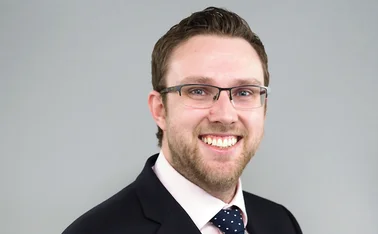
Post Europe: Storm surge modelling in Germany

The German coastline suffers from storm risks on a regular basis but a lack of accurate storm modelling has meant property policies have not included cover. Edward Murray reports on how this may be set to change.
Storm surge cover for the €300bn worth of property that lies along the German seaboard is finally working its way onto the insurance agenda following the development of an effective storm surge model.
To date the lack of an accurate and robust model to assess storm surge risks along the North Sea and Baltic Sea coastlines has meant insurance for this peril has largely been left off property policies.
A national picture
However, the new model developed by Aon Benfield, seeks to create a national picture of potential liabilities, encompassing the risks from both coasts. In turn this will allow insurers and reinsurers to get a better idea of the storm surge risks carried by the country as a whole and to assess how it can meet these risks in the future.
Explaining the background to the model, Parwiz Behboud, spokesman for Aon Benfield, says: "Storm surge cover has generally not been included in German buildings policies due to a lack of appropriate methods to accurately assess the peril. Up until now only quite rough scenario based solutions have existed, which were not sufficient to take a decision about the insurability of storm surges. But there is an increasing demand in the reinsurance market to have a scientifically adequate basis for assessing the risk of storm surges for the German coast."
"Up until now only quite rough scenario based solutions have existed." Behboud
Increasing need
The increasing need for such a model is exemplified in climate change studies carried out by the Potsdam Institute for Climate Impact Research, the Free University of Berlin and the University of Cologne; all in association with the German Insurance Association.
Findings from the work were released in recent weeks and predict a major increase in the frequency of significant flooding from storm surge events. Indeed by the year 2100, the research says major storm surge floods will occur once ever 25 years; double the present frequency of once in every 50 years.
Darkening horizon
Looking towards this darkening horizon it is little surprise that the German insurance market is beginning to push storm surge considerations further up the priority list and move them onto the debating agenda.
Mr Behboud says: "The purpose of this project is to stimulate a discussion about a potential storm surge cover both under present conditions and under changed conditions in the future. Therefore, the cumulative risk for the whole coast is being quantified, and tariffs and possible premiums are being calculated to prepare a basis for this discussion."
"It has not yet been discussed or decided as to whether storm surge will become a mandatory insurance." Pickel
Team effort
Built in-house by Impact Forecasting, Aon Benfield's model development unit, the model has been created by experts from Hamburg, London, Prague and Chicago. Meteorologists, geographers, mathematicians and software engineers have all been involved in the project and the model at last gives the German market some substance to its discussions around storm surge.
At the moment, however, there are a lot more questions than answers. It is still unknown whether this line of business will be profitable for insurers and reinsurers, what sort of liabilities the industry will be happy to take on and just how soon it will be underwriting the associated risks.
Mandatory measures
Michael Pickel, member of the executive board of the Hannover Re Group, comments: "It has not yet been discussed or decided as to whether storm surge will become a mandatory insurance, but I think the best way to sell it would be as an add-on to existing buildings insurance. At the moment we do not have any forecasts as to how profitable this line of business might be as there is no claims experience to draw on."
As risk takers working to protect their customers, Mr Pickel says it is up to the insurance industry to come up with solutions, but he believes it will still be a good few years before there is more substance to the available policies and premiums.
"70% of German households that do not have cover against natural hazards." German Insurance Association
Other priorities
Indeed, he believes the German insurance industry has a higher priority on its hands when it comes to the weather and that protecting the country from flood, rather than storm surge, is a more pressing matter.
This view is supported by the research carried out by the German Insurance Association and its partners, which predicted losses from flooding were set to increase by more than double by the year 2100.
Public information
In a bid to help individual households recognise the risk of changing weather patterns and protect themselves accordingly, the German Insurance Association has said it will make its national flood map available to the public and let people see for the first time the risk flooding poses to their property.
This is a direct attempt to encourage the 70% of German households that do not have cover against natural hazards to change their outlook for the future and to buy the appropriate cover.
Commensurate changes
The changing weather is driving commensurate changes in the German insurance industry and whether for internal flooding from some of the nation's mighty rivers or from storm surge along its extensive seaboard, the insurance industry is ramping up its future responsibilities and level of response.
As the frequency of major weather related flooding increases, having the appropriate cover in place is going to be a growing priority for German policyholders. Whether the German insurance industry can respond with policies that are both practical and profitable remains to be seen.
Only users who have a paid subscription or are part of a corporate subscription are able to print or copy content.
To access these options, along with all other subscription benefits, please contact info@postonline.co.uk or view our subscription options here: http://subscriptions.postonline.co.uk/subscribe
You are currently unable to print this content. Please contact info@postonline.co.uk to find out more.
You are currently unable to copy this content. Please contact info@postonline.co.uk to find out more.
Copyright Infopro Digital Limited. All rights reserved.
As outlined in our terms and conditions, https://www.infopro-digital.com/terms-and-conditions/subscriptions/ (point 2.4), printing is limited to a single copy.
If you would like to purchase additional rights please email info@postonline.co.uk
Copyright Infopro Digital Limited. All rights reserved.
You may share this content using our article tools. As outlined in our terms and conditions, https://www.infopro-digital.com/terms-and-conditions/subscriptions/ (clause 2.4), an Authorised User may only make one copy of the materials for their own personal use. You must also comply with the restrictions in clause 2.5.
If you would like to purchase additional rights please email info@postonline.co.uk








